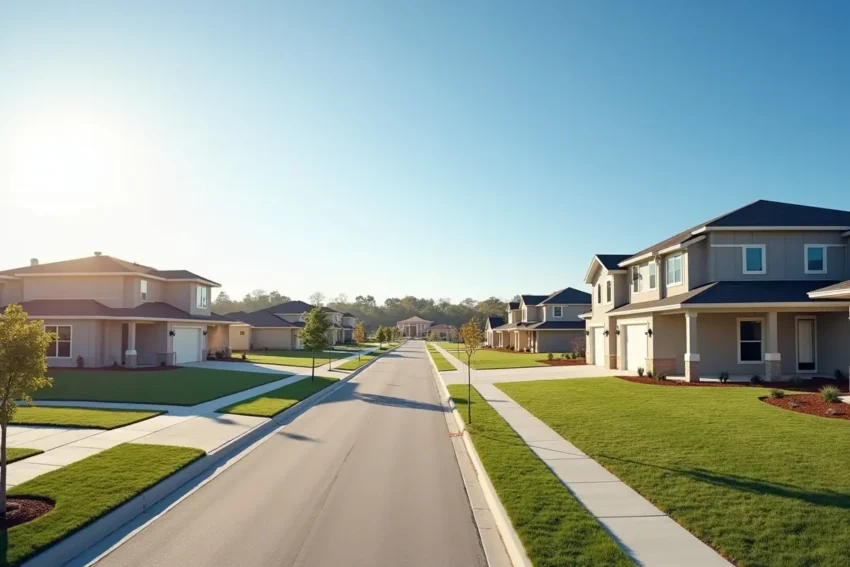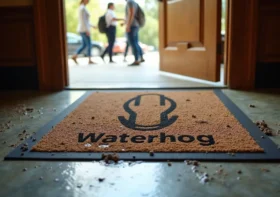Rising Suburbs in Texas That Are Worth a Look

North Texas remains an economic powerhouse, attracting nearly 500 new residents every day. This growth has made the Dallas-Fort Worth (DFW) metroplex a magnet for corporate investment and job creation. However, finding value in this rapidly expanding region is challenging. The DFW median home price is around $380,000. High prices, coupled with mortgage rates hovering near 6.5 percent, have forced buyers to look beyond the core cities.
The smartest investors and new residents are now targeting “rising suburbs.” These are communities defined not just by lower prices, but by massive infrastructure projects, significant corporate relocations, and aggressive price corrections that offer buyers leverage. The current market is uniquely favorable: high inventory gives buyers time, while steady job growth ensures long-term home value stability.
Here are the key suburbs setting themselves up for sustainable growth and offering real value in 2025.
Contents
The Northern Growth Corridor: Investment and Jobs
The growth story of North Texas is often centered in Collin and Denton Counties. While Frisco and Plano are established, neighboring cities are attracting enormous investment that promises future stability and appreciation.
McKinney: America’s Top Housing Market Builds for the Future
McKinney continues to be recognized nationally, topping WalletHub’s list as the best real estate market in 2025. It blends strong community appeal with aggressive economic development. The city is not necessarily cheap, but it offers excellent value relative to income.
McKinney’s future is literally taking off at its airport. The city is funding infrastructure for a new passenger terminal at McKinney National Airport. The goal is to start commercial service by late 2026. This strategic investment is funded by sales-tax revenue bonds and grants, signaling a strong civic commitment to expanding economic opportunity and connectivity for the region. The construction project, which broke ground earlier this year, highlights McKinney’s dedication to a pro-business environment that supports high-quality development.
The housing market here is competitive but manageable. The median sale price sits around $507,495 in September 2025. While this is higher than the DFW average, buyers are gaining leverage. Home values have declined by 5.4 percent over the past year. Houses take time to sell, sitting on the market for an average of 47 to 67 days. This slower pace rewards patient buyers who want to secure a home in a top-rated, growing community.
Denton: The Next Tech and Manufacturing Hub
Denton offers a balance of affordability and robust economic development fueled by technology and manufacturing. The median sale price is around $385,000. Prices have moderated, dropping 4.2 percent year-over-year.
Denton County is attracting large-scale, high-paying jobs. Wistron InfoComm, an electronics manufacturer and major global supplier, plans to invest $687 million in two new facilities in the county. This project alone will generate 888 new full-time jobs with an average base salary of $63,000.
Further boosting Denton’s economic profile is a massive $6.1 billion real property investment by Core Scientific. This project will establish high-performance computing infrastructure for artificial intelligence applications. City leaders believe this investment confirms Denton’s expanding infrastructure makes it an ideal hub for corporate interests. Buyers moving to Denton are acquiring a home in an established university city that is now cementing itself as a nexus for high-tech manufacturing and AI infrastructure.
The Value-Driven Periphery: Maximum Buyer Leverage
For those seeking homes under $500,000 and willing to trade a longer commute for maximum value, the outlying suburbs offer excellent opportunities.
Melissa: High Income, Low Price Correction
Melissa, located in Collin County, stands out for its strong balance of income and home prices. Residents here enjoy a median household income of $137,875. This high earning power makes the average home price of $476,813 comparatively affordable for locals.
The market in Melissa is currently offering buyers the biggest possible discount. In September 2025, the median sale price was $450,000, representing a significant 16.0 percent decline year-over-year. This correction makes it a prime target for buyers. The extreme buyer leverage is also evident in the sales velocity: homes spend an average of 91 days on the market. This long timeline means sellers are highly motivated, giving buyers an undeniable advantage in negotiating both price and concessions.
Southern Star: Waxahachie
South of Dallas, the Waxahachie corridor offers some of the most affordable options in the DFW metroplex. Waxahachie combines historical charm with strong population growth. The city experienced a 13.79 percent population jump between 2020 and 2022. Its home values remain accessible, with an average around $363,709 (July 2024 data). This city, along with neighbors like Midlothian, represents the core of the southern growth corridor, offering a blend of small-town appeal and steady expansion.
North Texas Suburb Comparison: Growth and Velocity
The following table summarizes the market conditions in the fastest-rising suburbs in North Texas, highlighting the median price and the speed of sale in the current environment.
| City | Median Sale Price (Approx.) | YoY Price Change | Median Days on Market (DOM) | Primary Economic Driver |
| McKinney | $507,495 | Down 5.4% (Value) | 67 Days | Commercial Airport, Corporate Investment |
| Denton | $385,000 | Down 4.2% | 69 Days | AI/Tech Infrastructure, Manufacturing Jobs |
| Melissa | $450,000 | Down 16.0% | 91 Days | High Income-to-Price Ratio, New Housing |
| Waxahachie | $363,709 (July 2024) | N/A | N/A | Population and Development Growth |
Seller Strategy: Selling a House Fast in Fort Worth
The DFW market shift is most noticeable in the slower pace of sales. This change impacts sellers in core cities like Fort Worth, where the median days on market have stretched to 53 to 59 days. Selling a house fast in Fort Worth now requires a strategic understanding of the new competitive landscape.
Tarrant County inventory is up 27 percent year-over-year. This flood of available homes means buyers no longer face pressure to overbid. Homes in Fort Worth now typically sell for less than their original list price.
To expedite a sale in this market, Fort Worth sellers must embrace proactive pricing and presentation:
- Aggressive Upfront Pricing: The days of testing a high list price are over. To attract immediate attention, sellers should price their home competitively below comparable recent sales from the start. Homes across the metroplex are selling about 5 percent below list price on average.
- Offer Financial Concessions: Resale homes must compete directly with new construction, where builders offer incentives like mortgage rate buy-downs and closing cost assistance. To level the field, Fort Worth sellers should consider offering a contribution toward the buyer’s closing costs. This financial help can be more appealing than a small price cut for buyers struggling with today’s high interest rates.
- Highlight Community and Upgrades: Buyers are seeking move-in-ready homes that provide measurable value. Sellers should focus marketing on recent upgrades and local amenities. Fort Worth continues to invest in infrastructure, such as the 8th Avenue Safety and Circulation Improvements and ongoing revitalization of areas like Magnolia Village. Highlighting proximity to these established or improving neighborhoods can boost a listing’s appeal.
The rising suburbs of North Texas provide a blueprint for smart buying today. Value is found not in the lowest price, but in properties located in cities backed by major economic investment and offering significant buyer leverage due to market oversupply.



